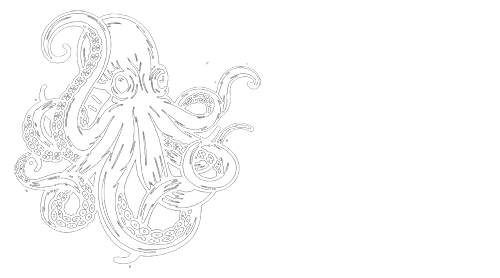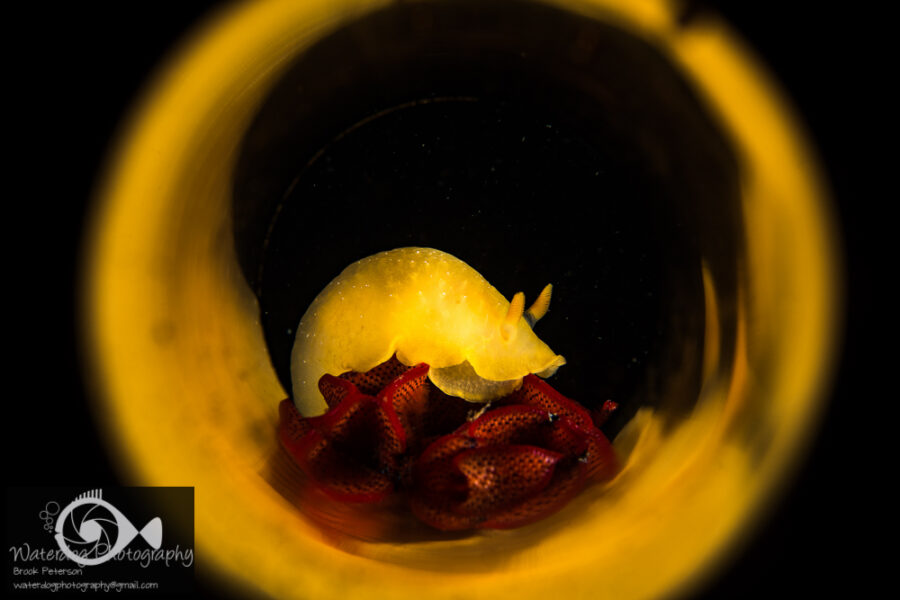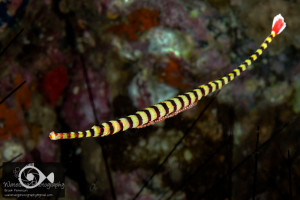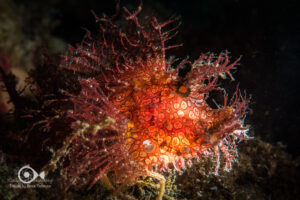One of the great things about photography is the ability of the photographer to express their creativity. Sometimes creativity is inspired by the “moment” or the “environment” and sometimes that creativity is painstakingly thought out. On a recent trip to Southeast Asia, a dive guide who was not a photographer had creativity coming out his ears, so his ideas and mine became a collaboration in creativity.

Deep inside the barrel of a tube sponge live tiny critters such as isopods and shrimp. The tubes can be more than a foot long, so it is hard to see very far down in them. My guide taught me that if you put your dive light close to the bottom of the sponge, the critters inside would head to the opening to get away from the light, so you can “chase” the little shrimp with your light to the opening where you can photograph them.

It isn’t always as easy as that, though. Sometimes the tiny animals remain inside their safe home. These shrimp were living inside a tunicate which had a very small opening in the top, but was quite spacious inside. In order to photograph them, the lens of my camera had to be up against their front door and the light had to come through the walls of the tunicate. This ended up being effective because of the green cast the walls of the tunicate gave to the inhabitants inside.

This tiny isopod is smaller than a grain of rice, and I wanted to show the environment in which it lives, so I had to back the camera lens away from the tunicate, then focus through the opening to the animal below. In the above image, the pink “frame” is about an inch higher than the animal at the bottom of the tunicate. It’s a bit of a tricky technique, but quite effective when you get it right.

Sometimes it is the moment that captures your imagination. One night I came upon this octopus living inside a coffee cup. He was very active and let me photograph him for about ten minutes doing various things before he turned the cup upside down and buried it and himself in the sand. In the image above, my strobes were pointed directly at each other with the octopus in the middle. Since he was stirring up so much sand, this helped eliminate the backscatter in the background, while lighting the animal up nicely.

Capturing the moment with these tiny gobies in the neck of a bottle was a good exercise in creativity. First, lighting the fish so that its features are sharp and the environment is defined required patience. There are two fish in the above image, one behind the other. As I wanted just the eyes of the fish and the front of the bottle to be in focus, I was using a shallow depth of field. This meant waiting for one of the fish to settle in just the right place so that all the elements could come together. I was also using a snoot, articulated so that the light was going directly up the neck of the bottle.

THREE’S A CROWD
The fish were also darting around, trying to decide on how to pair up and vying for each others attention. So this shot was intended to tell that story.

Finally, capturing the “yawn” of the fish was another exercise in patience where I was rewarded with three yawns, one from each of the three fish.

Shooting fish in a barrel, that is, through the opening of a bottle, cup, tunicate, or sponge was a prelude for an experiment in creativity we call “ringflection.” This is an example of an idea that was painstakingly thought out to produce an effect. In this image, I have used a reflective metal tube to produce the animal’s own reflection as a frame around it. With practice, you can find the right length and diameter of the tube for your particular setup, the best lighting, and the most effective position of the animal. Shooting fish in a barrel, it seems, is not as ridiculously easy as we have been led to believe
Join me for a workshop! Travel to a great destination where you will have exclusive coaching on your underwater photography. Meet new people, network, try new techniques, and learn with the pros! Click on Travel and Workshops for more information!





